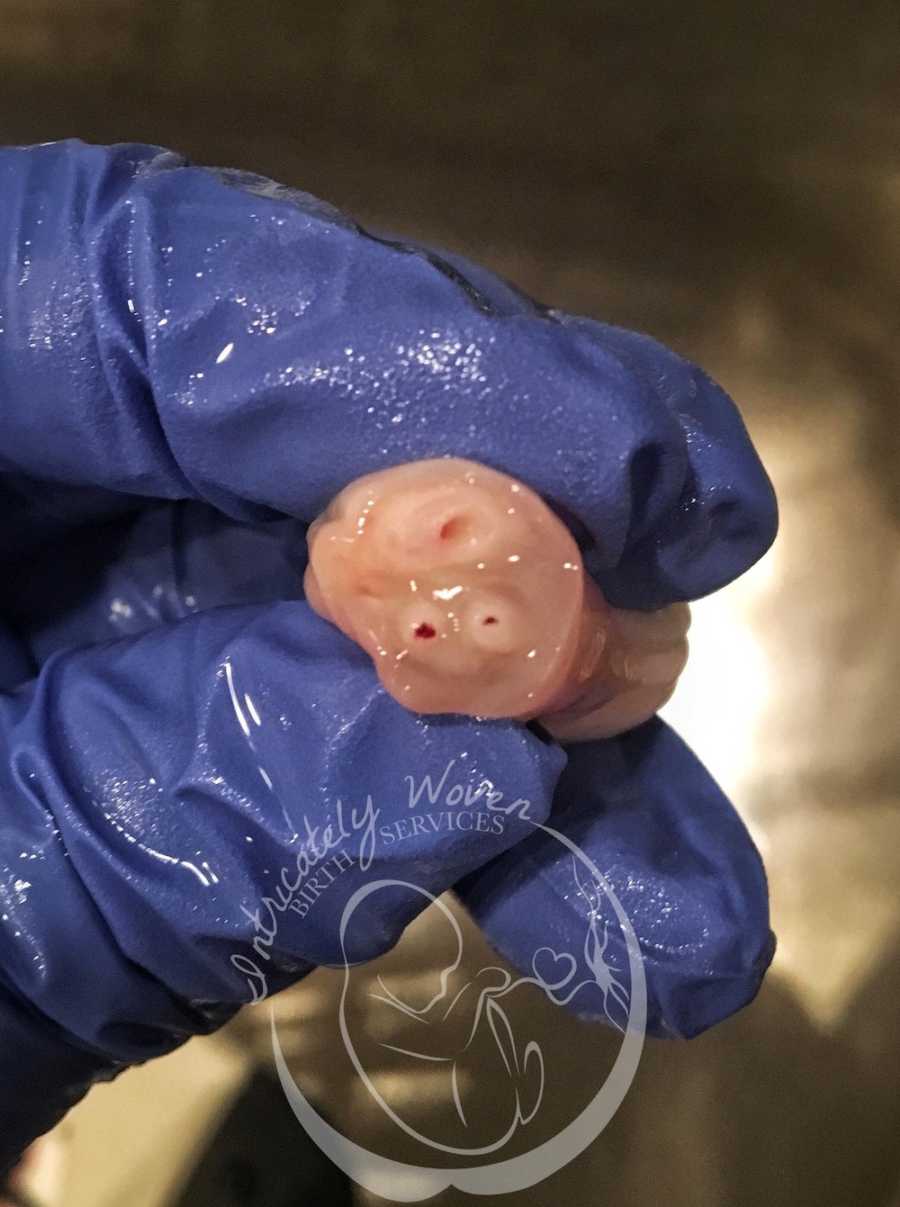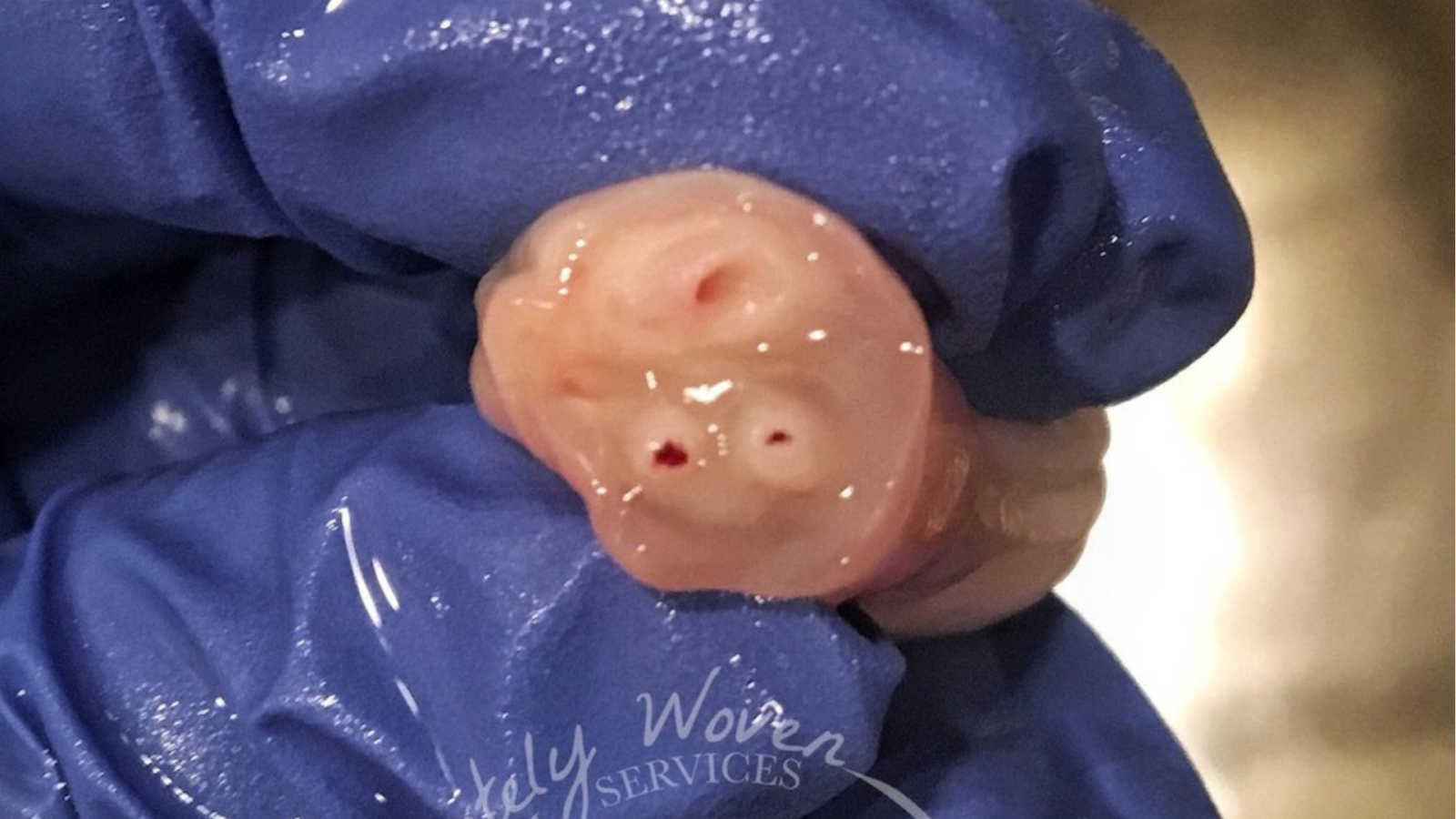“Did you know that a normal umbilical cord contains 3 vessels? There are two arteries and one vein (see the vein on top and the arteries on the bottom of the photo, taken from a placenta this evening).
A lot of people think it’s basically just a ‘tube’ of sorts transporting nutrients to their baby. But…it’s so much more intricately designed than that!
The vein carries oxygenated and nutrient-rich blood to your baby, and the arteries carry the deoxygenated blood, waste products (such as carbon dioxide), and nutrient-depleted blood through the placenta and into your bloodstream to dispose of. After delivery, these vessels close by themselves. The arteries close first due to their muscular walls. The umbilical vein follows closely behind, allowing oxygenated blood to return to your baby from the placenta. At birth, the placenta contains 1/3 of your baby’s blood volume. By delaying cord clamping for several minutes, you are allowing that blood to be transferred to your baby where it belongs via the umbilical vein.

I absolutely love inspecting the vessels in the cords (and throughout the entire placenta, really), as my awe never ceases over how our bodies are so intricately woven and knit together in the womb. And I love to share my excitement over what others might consider ‘gross’. Maybe I’m weird. But that’s okay.
(Edit: Many have pointed out that I have the circulation listed incorrectly. This is not the case for umbilical cord anatomy.
Read here: https://www.britannica.com/science/umbilical-cord
Other recommended reading on this topic would be ‘Maternal, Fetal, & Neonatal Physiology‘ by Susan Tucker Blackburn.)”
This story was written by Kayla Hadfield of Intricately Woven Birth Services. The article originally appeared here. Follow her on Instagram here. Submit your story here, and be sure to subscribe to our best love stories here.
Do you know someone who could benefit from this story? Please SHARE on Facebook or Twitter.


